
Gallery Mau Mau (1996–1998) was a counter-culture "art space" situated in Cape Town, South Africa. Although short-lived, the experimental space provided low-cost access to the arts for artists of all races, broke boundaries and defined the period in which a visual arts culture saw enormous growth in the city. It was run by cultural activist David Robert Lewis, multimedia artist Adam Lieber, musician and disk jockey Nick Birkby and fine artist Chris Slack.
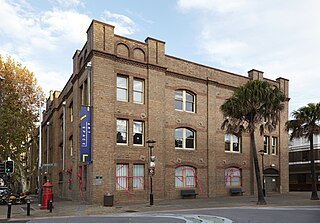
Artspace, officially Artspace Visual Arts Centre, is an independent, not-for-profit and non-collecting residency-based contemporary art centre. Artspace is housed in the historic Gunnery Building in Woolloomooloo, fronting Sydney Harbour in Sydney, Australia. Devoted to the development of certain new ideas and practices in contemporary art and culture, since the early 1980s Artspace has been building a critical context for Australian and international artists, curators and writers.
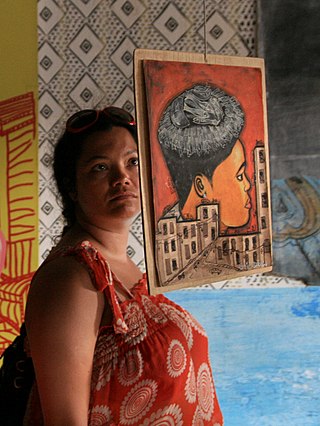
Tracey Rose is a South African artist who lives and works in Johannesburg. Rose is best known for her performances, video installations, and photographs.
Sonia Khurana is an Indian artist. She works with lens-based media: photo, video, and the moving image, as well as performance, text, drawing, sound, music, voice, and installation.

Asia Art Archive (AAA) is a nonprofit organisation based in Hong Kong which focuses on documenting the recent history of contemporary art in Asia within an international context. AAA incorporates material that members of local art communities find relevant to the field, and provides educational and public programming. AAA is one of the most comprehensive publicly accessible collections of research materials in the field. In activating its collections, AAA initiates public, educational, and residency programmes. AAA also offers research grants and publishes articles on IDEAS Journal.
The Vera List Center for Art and Politics is an American nonprofit research organization and public forum for art, culture, and politics, established in 1992. Vera List was an American art collector and philanthropist.
The Shanghai Biennale is one of the highest-profile contemporary art events in Shanghai and the most established art biennale in China. It was initially held in the Shanghai Art Museum. From 2012 on, it has been hosted in Power Station of Art, the first state-run museum dedicated to contemporary art in mainland China. Shanghai Biennale provides artists, curators, writers and art supporters from around the world with a space to meet and exchange ideas about their experiences, works and inspirations to create international dialogues. It highlights the achievements of Asian artistic creativity and production and challenges the conventional division of the world between East and West. Aside from its main museum show, it also includes talks, lectures and installations in various venues throughout the city.

Held in Cape Town, South Africa Infecting the City is a public arts festival that is committed to making art freely available to everyone. The festival hosts a range of different types of site-specific art, art intervention and performance art in the central part of the city. Each year the festival takes on a social issue or theme which the participating artists respond to. In 2011, the Festival worked with Cape Town's artistic and cultural community to present public art under the theme of Treasure. This theme was intended to celebrate the artistic traditions and contemporary practices of the diverse communities within South Africa and to explore Cape Town's "Afropolitan" reality.

Badilisha Poetry X-Change is a platform dedicated to showcasing poetry from Africa and the African Diaspora. The project came out of recognising the lack of documentation of African poets, on the African continent and in the rest of the world. Its aims are to fill this void as well as create a comprehensive global archive of Pan-African poets that can accessed internationally. First launched in 2008 as a poetry festival, the Spier Poetry Exchange. by nonprofit organisation Africa Centre in Cape Town, the festival centred on various aspects of developing, celebrating, archiving and documenting poetry and voices. In 2009, the Spier Poetry Exchange changed to the Badilisha Poetry X-Change. Although different in name, Badilisha Poetry X-Change continues the "exchange" between poets, creating spaces and platforms for programmed poetry interventions, workshops and presentations. Its existence continues to provide new and established Pan-African voices a space of celebration, documentation, proliferation, and self-reflection.
A project of the Badilisha Poetry X-Change Badilisha Poetry Radio is an online platform created to appreciate, celebrate and discover contemporary Pan-African poetry. Badilisha Poetry Radio focuses on weekly podcasts featuring poets from the African Continent and its Diaspora. It is a space dedicated to the exposure and growth of previously unheard and unknown poetry voices from the continent, and an archive of historical poets from the continent and beyond.
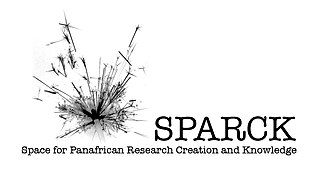
Space for Pan African Research Creation and Knowledge (SPARCK) is a multi-sited, multi-disciplinary project founded in 2008 in collaboration with The Africa Centre. It is structured around a series of residencies for artists from across Africa and the African diaspora working in numerous media and styles, a wide range of exhibitions, installations, performances, screenings, Internet link-ups, publications, round-table discussions and workshops. Its initiatives are directed at a diverse body of the public and actively engaged local communities.
Jay Pather is a South African curator, choreographer, and director working in Cape Town. He is the director of Siwela Sonke Dance Theatre and an associate professor at the University of Cape Town. Pather has been involved in the choreography and direction of over one hundred productions in South Africa and even more internationally.

Nancy Buchanan is a Los Angeles-based artist best known for her work in installation, performance, and video art. She played a central role in the feminist art movement in Los Angeles in the 1970s. Her work has been exhibited widely and is collected by major museums including the Museum of Modern Art and the Centre Pompidou.
The African Artists' Foundation (AAF) is a non-profit organization, based in Lagos, Nigeria. It was founded in 2007 by Azu Nwagbogu, as a platform for contemporary African art and artists working across photography, fine art, video, ceramics, sculpture, performances, writing and curation. The African Artists' Foundation has through the establishment of LagosPhoto festival, National Art Competition and its residency program raised international awareness to African creativity by also collaborating with institutions, foundations, biennales and festivals globally.

Koyo Kouoh is Cameroonian-born curator who has been serving as Executive Director and Chief Curator of the Zeitz Museum of Contemporary Art Africa in Cape Town since 2019. In 2015, the New York Times called her "one of Africa’s pre-eminent art curators and managers", and from 2014 to 2022, she was annually named one of the 100 most influential people in the contemporary art world by ArtReview.

Claire Tancons is a curator, critic, and historian of art. She was born in Guadeloupe and is currently based in Paris, after spending three years in Berlin and eighteen in the US, of which she lived a decade in New Orleans.
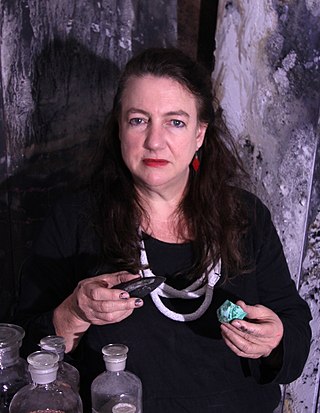
Jeannette Unite is a South African artist who has collected oxides, metal salts and residues from mines, heritage and industrial sites to develop paint, pastel and glass recipes for her large scale artworks that reflect on the mining and industrial sites where humanity's contemporary world is manufactured.
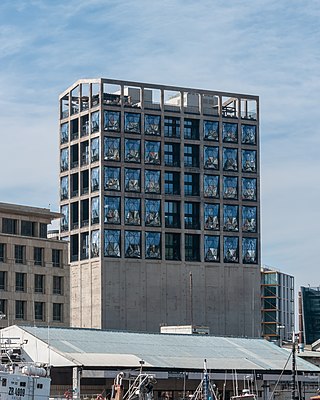
Zeitz Museum of Contemporary Art Africa is a public non-profit museum in Cape Town, South Africa. Zeitz MOCAA opened on September 22, 2017 as the largest museum of contemporary art from Africa and its diaspora. The museum is located in the Silo District at the Victoria & Alfred Waterfront in Cape Town. A retail and hospitality property, the Waterfront receives around 24 million local and international visitors per year.
Kai Lossgott is a South African interdisciplinary artist whose object, body and lens-based practice encompasses the fields of performance, photography, writing, drawing and film.
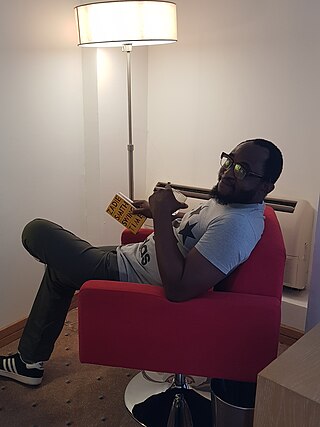
Efe Paul Azino born in Lagos is a Nigerian writer, performance artist and poet, regarded "as one of Nigeria's leading performance poets." He has also been regarded as one who has "played a pivotal part in lifting the words from the page and giving them life" in the Nigerian spoken word performance space.













